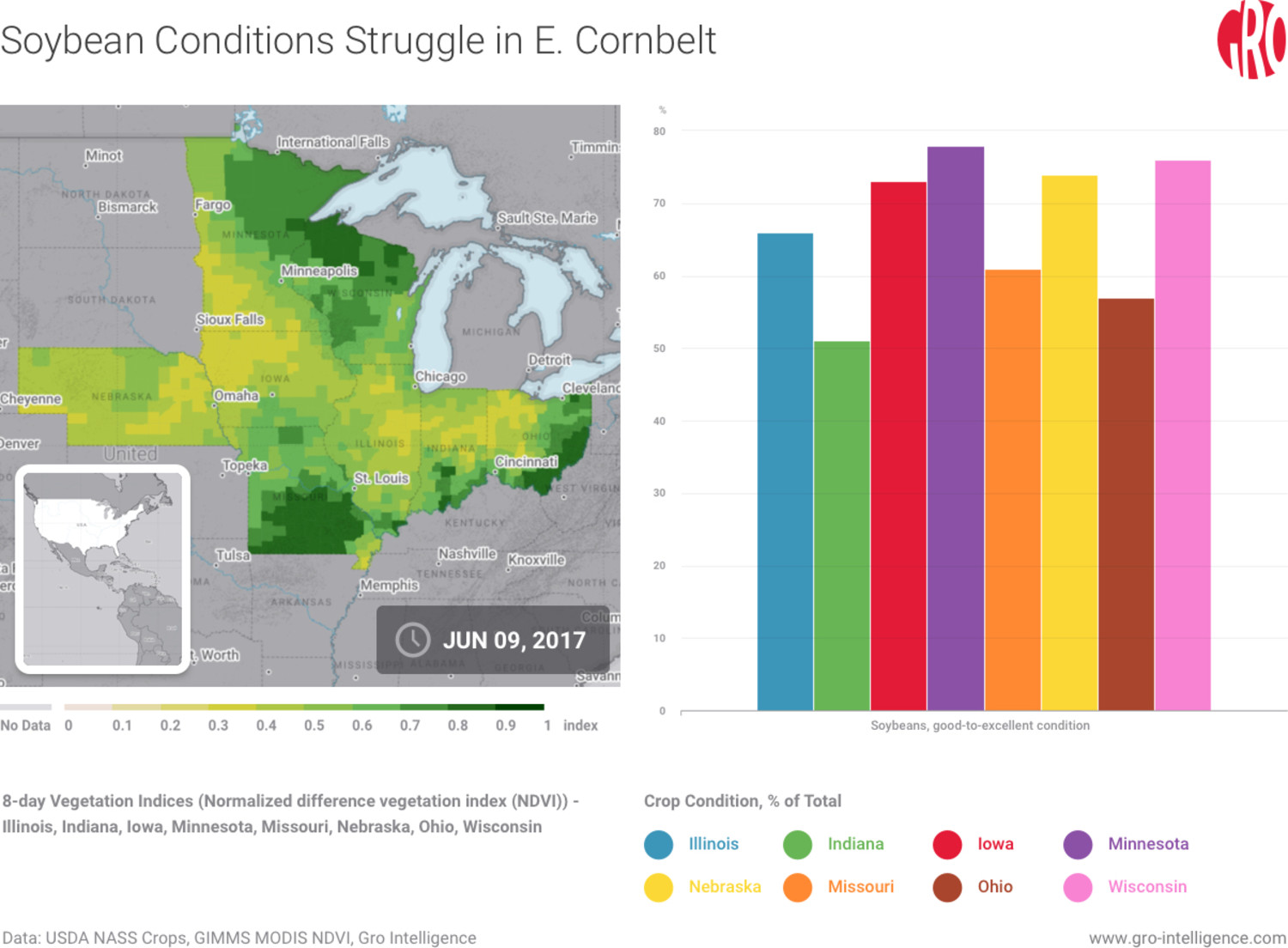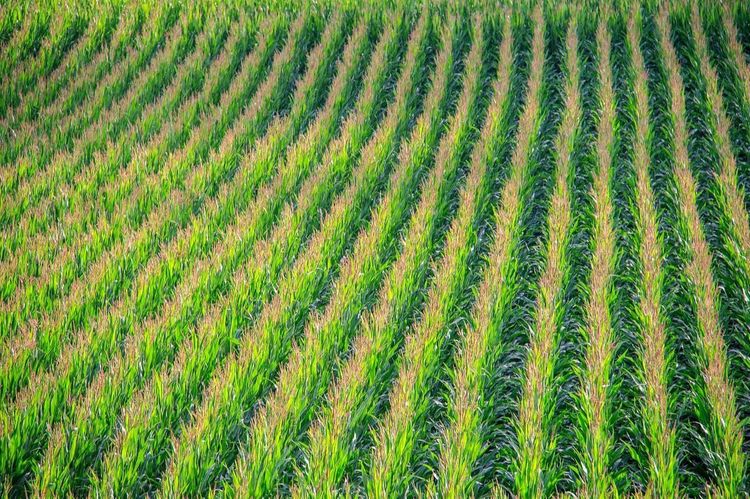Watching This Week: Soybean Conditions, Global Butter Supply, And US Farm Income
CROP CONDITIONS
Soybeans Pull Corn Along For The Ride:
US soybean conditions are off to a disappointing start this season—66% of US soybeans were rated in good-to-excellent shape vs. 74% a year ago. However, corn conditions were not only inline with expectations last week, but weather models also added more rain into the 6-to-10 day forecast. Despite a near-term dampening of the risk premium for corn, bets on the relative price spread between corn and soybeans pulled corn futures higher. As such, we encourage traders to keep a close eye on emerging vegetation data in the Midwest and the USDA’s rating of soybeans this week.

FOOD COMMODITIES
Buttering Up Is Becoming Expensive:
The European Union’s production and consumption of butter is expected to remain relatively flat in 2017. Yet, the French are reportedly running short. It didn’t help that the spring milk flush (seasonal production burst) across the EU was muted. However, there is a macro story at play as well. Demand is rising in India and United States, the world’s number 1 and 3 producers. In fact, Indian and American consumers are projected to account for over two-thirds and one-fourth, respectively, of the 3% year-over-year increase in global consumption. More importantly, US butter exports may fall year-over-year by roughly 40%, which doesn’t leave room for setbacks elsewhere. Dairy traders and producers should position for Thursday’s US Cold Storage report, as it could shed light on whether rising butter prices are impacting US demand.

FARMER ECONOMICS
Could US Crop Growers See Margin Recovery?
US growers of major field crops should see their variable operating costs end steady-to-slightly down in 2017. Lower fuel and fertilizer costs are already helping farmers, but production margins are being compressed as a result of falling production value. Given that producer income is trending downward, farmland values are truly standing at the precipice. In fact, lower crop yields this season would actually be a blessing in disguise if producer income stabilized. We recommend watching for updated cost-of-production estimates for major US field crops, which will be released by the USDA on Wednesday.

 Blog
BlogSouth America: Fall Planting Snapshot
 Insight
InsightSoggy Start to Spring Points to Fertilizer Application Delays for US Corn
 Insight
InsightChina’s Grain Imports Reach Record With a Growing Reliance on Brazil
 Insight
Insight

 Search
Search